W&T Wetenschap & Technologie
Een plek om te discussiŰren over wetenschappelijke onderwerpen, wetenschappelijke problemen, technologische projecten en grootse uitvindingen.



Nieuw ontdekte komeet ISON wordt mogelijk spektakel
Diverse astronomie websites speculeren inmiddels volop over de nieuwe komeet die recentelijk ontdekt is. De komeet, C/2012 S1 (ISON), zou namelijk wel eens op ramkoers kunnen liggen met de zon. De komeet zou zich nu nog in de buurt van Jupiter bevinden en maakt zich op met een "close encounter" met de zon eind volgend jaar. Volgens astronomen zal ISON in november 2013 op 0,012 AU (1,8 miljoen kilometer) van de oppervlakte van de zon razen.
De enorme hitte kan er dan voor zorgen dat de komeet fel zal oplichten. Zo fel zelfs dat de komeet met het blote oog te zien zal zijn.
Veel is er echter over ISON nog niet bekend, net zo min over haar uiteindelijke 'einde'. Karl Battams, werkzaam bij NASA, geeft aan dat er twee mogelijkheden zullen en dat die de komende maanden uitsluitsel moeten gaan bieden.
"Het beste scenario is dat de komeet volgend jaar november langs de zon een zeer groot fel licht zal voortbrengen. De komeet zou zo fel zijn dat hij zelfs negatieve magnitudes moet kunnen halen en zou op het Noordelijk halfrond maandenlang te zien kunnen zijn.
"Een tweede scenario is dat de komeet voortijdig uitdooft of in stukken uiteen valt zoals recentelijk met de veel besproken komeet Elenin is gebeurd. Er zijn in de historie meer kometen geweest die de wetenschap versteld hadden moeten doen staan om vervolgens als een nachtkaars uit te gaan
Het is goed mogelijk dat ISON een nieuwe komeet is die uit de Oort-wolk komt, waardoor ISON zijn allereerste ontmoeting met de zon gaat maken. Als dat zo is dan bestaat de kans dat de komeet, die dan nog nooit eerder onderhevig is geweest aan extreme hitte of zwaartekrachten, in stukken uiteen breekt en wel maanden voordat ze de zon bereikt. "
Beide scenario's zijn goed mogelijk, net zoals 'alles wat er tussen in ligt', aldus de NASA-expert. De komeet zal de komende maanden goed geobserveerd gaan worden. Vanwege de afstand verwacht men de komende tijd weinig nieuws, maar wie weet hebben we eind volgend jaar een prachtig verschijnsel aan de nachtelijke hemel.
Opmerkelijk detail:
Komeet-onderzoeker John Bortle laat weten dat komeet ISON qua baan
opmerkelijke gelijkheden vertoond met de "Great Comet van 1680". Die komeet was destijds de eerste die met een telescoop werd ontdekt en was zo helder dat hij zelfs overdag zichtbaar was met het blote oog. Die komeet was zichtbaar van november 1680 tot en met maart 1681.
Bron: Spaceweather
[ Bericht 0% gewijzigd door Frutsel op 25-09-2012 16:38:52 ]
Diverse astronomie websites speculeren inmiddels volop over de nieuwe komeet die recentelijk ontdekt is. De komeet, C/2012 S1 (ISON), zou namelijk wel eens op ramkoers kunnen liggen met de zon. De komeet zou zich nu nog in de buurt van Jupiter bevinden en maakt zich op met een "close encounter" met de zon eind volgend jaar. Volgens astronomen zal ISON in november 2013 op 0,012 AU (1,8 miljoen kilometer) van de oppervlakte van de zon razen.
De enorme hitte kan er dan voor zorgen dat de komeet fel zal oplichten. Zo fel zelfs dat de komeet met het blote oog te zien zal zijn.
Veel is er echter over ISON nog niet bekend, net zo min over haar uiteindelijke 'einde'. Karl Battams, werkzaam bij NASA, geeft aan dat er twee mogelijkheden zullen en dat die de komende maanden uitsluitsel moeten gaan bieden.
"Het beste scenario is dat de komeet volgend jaar november langs de zon een zeer groot fel licht zal voortbrengen. De komeet zou zo fel zijn dat hij zelfs negatieve magnitudes moet kunnen halen en zou op het Noordelijk halfrond maandenlang te zien kunnen zijn.
"Een tweede scenario is dat de komeet voortijdig uitdooft of in stukken uiteen valt zoals recentelijk met de veel besproken komeet Elenin is gebeurd. Er zijn in de historie meer kometen geweest die de wetenschap versteld hadden moeten doen staan om vervolgens als een nachtkaars uit te gaan
Het is goed mogelijk dat ISON een nieuwe komeet is die uit de Oort-wolk komt, waardoor ISON zijn allereerste ontmoeting met de zon gaat maken. Als dat zo is dan bestaat de kans dat de komeet, die dan nog nooit eerder onderhevig is geweest aan extreme hitte of zwaartekrachten, in stukken uiteen breekt en wel maanden voordat ze de zon bereikt. "
Beide scenario's zijn goed mogelijk, net zoals 'alles wat er tussen in ligt', aldus de NASA-expert. De komeet zal de komende maanden goed geobserveerd gaan worden. Vanwege de afstand verwacht men de komende tijd weinig nieuws, maar wie weet hebben we eind volgend jaar een prachtig verschijnsel aan de nachtelijke hemel.
Opmerkelijk detail:
Komeet-onderzoeker John Bortle laat weten dat komeet ISON qua baan
opmerkelijke gelijkheden vertoond met de "Great Comet van 1680". Die komeet was destijds de eerste die met een telescoop werd ontdekt en was zo helder dat hij zelfs overdag zichtbaar was met het blote oog. Die komeet was zichtbaar van november 1680 tot en met maart 1681.
Bron: Spaceweather
[ Bericht 0% gewijzigd door Frutsel op 25-09-2012 16:38:52 ]


SPOILEROm spoilers te kunnen lezen moet je zijn ingelogd. Je moet je daarvoor eerst gratis Registreren. Ook kun je spoilers niet lezen als je een ban hebt.Cool.


Ik kan me (een jaar of 15) geleden nog herinneren dat Hale Bopp overvloog. Erg gaaf om te zien zo'n heldere komeet!


Dat was toch eind jaren 90? Staat mij ook nog wel iets van bij.quote:Op dinsdag 25 september 2012 17:37 schreef Robus het volgende:
Ik kan me (een jaar of 15) geleden nog herinneren dat Hale Bopp overvloog. Erg gaaf om te zien zo'n heldere komeet!
Op maandag 8 januari 2018 14:29 schreef BadderHaring het volgende:
Ajax is geen club. Dat is een bedrijf.
Ajax is geen club. Dat is een bedrijf.


Klopt!
Wiki:
Wiki:
quote:Komeet Hale-Bopp (officiŰle aanduiding C/1995 O1) was waarschijnlijk de meest geobserveerde komeet van de 20e eeuw, en was een van de helderste kometen van de afgelopen paar decennia. De komeet was gedurende lange tijd (18 maanden) met het blote oog zichtbaar. Dit is tweemaal zo lang als de vorige recordhouder, de komeet van 1811.
Hale-Bopp werd op 23 juli 1995 ontdekt op een grote afstand van de zon, wat deed vermoeden dat de komeet wel eens bijzonder helder zou kunnen worden in de omgeving van de zon. Dit deed de komeet ook en was gedurende het voorjaar van 1997 gemakkelijk zichtbaar met het blote oog.


Ook gewoon precies15 jaar.
Op maandag 8 januari 2018 14:29 schreef BadderHaring het volgende:
Ajax is geen club. Dat is een bedrijf.
Ajax is geen club. Dat is een bedrijf.


Bron: NOSquote:Spectaculaire komeet op komst
Een komeet die eind 2013 aan het firmament verschijnt zal mogelijk een spectaculair schouwspel opleveren. Dat hopen astronomen die de komeet C/2012 S1 vorige week ontdekten.
Russische astronomen fotografeerden de komeet vorige week in het sterrenbeeld Kreeft. Het object is nu nog een miljard kilometer van ons verwijderd en daardoor alleen met zeer sterke telescopen te vinden. Herfst volgend jaar zal daar echter verandering in komen.
Vanaf oktober 2013 zal de komeet net zichtbaar moeten zijn in de nachtelijke hemel. Naar mate hij dichter bij de zon komt, zal de komeet beter te zien zijn en mogelijk zelfs helderder worden dan de volle maan.
Staart
Als de zon het ijs van de komeet langzaam laat smelten, zal de komeet bovendien een staart krijgen die het geheel nog imposanter kan maken.
Uiteindelijk zal komeet rond 28 november langs de zon schieten en weer de ruimte in geslingerd worden. De aarde loopt volgens de ontdekkers geen gevaar.
Katten
Astronomen kunnen nog niet precies voorspellen hoe gedenkwaardig het fenomeen zal zijn. Dat hangt af van veel factoren, zoals de precieze baan en de snelheid waarmee het ijs smelt.
"Kometen zijn net katten", waarschuwt een expert. "Ze hebben een staart en ze doen wat ze willen."


Shoemaker Levy was ook erg spectaculair, misschien nog spectaculairder dan Hale Bopp, die viel op Jupiter. Kan me nog herinneren hoe we naar de Sterrenwacht in Eindhoven gingen, om het live mee te maken. Prachtige tijd was dat.
Good intentions and tender feelings may do credit to those who possess them, but they often lead to ineffective — or positively destructive — policies ... Kevin D. Williamson


Hale Bopp kan ik me nog wel herinneren maar dacht dat er onlangs ook eentje was die niet lang daarvoor pas was ontdekt. McNaaght ofzo?


McNaught werdt in 2006 ondekt.quote:Op woensdag 26 september 2012 13:33 schreef Frutsel het volgende:
Hale Bopp kan ik me nog wel herinneren maar dacht dat er onlangs ook eentje was die niet lang daarvoor pas was ontdekt. McNaaght ofzo?
Maar de komeet die net voor de komst (1997)
van Hale-Bop werdt ontdekt heet Hyakutake - 1996
Maar ik hoop dat ISON net zoiets (of beter) wordt als McNaught
[ Bericht 2% gewijzigd door -CRASH- op 08-01-2013 20:44:58 ]
<a href="http://www.vwkweb.nl/" rel="nofollow" target="_blank">[b]Vereniging voor weerkunde en klimatologie[/b]</a>
<a href="http://www.estofex.org/" rel="nofollow" target="_blank">[b]ESTOFEX[/b]</a>
<a href="http://www.estofex.org/" rel="nofollow" target="_blank">[b]ESTOFEX[/b]</a>


Je ineens realiseren dat eind jaren '90 alweer 15 jaar geleden isquote:Op dinsdag 25 september 2012 17:39 schreef MPC60 het volgende:
[..]
Dat was toch eind jaren 90? Staat mij ook nog wel iets van bij.


En krijgen we een Sinterklaas en een kerst met een komeet aan de hemel !?!quote:COMET ISON APPROACHES:
Later this year, Comet ISON could put on an unforgettable display as it plunges toward the sun for a fiery encounter likely to turn the "dirty snowball" into a naked-eye object in broad daylight. At the moment, however, it doesn't look like much. John Chumack sends this picture, taken Jan. 8th, from his private observatory in Yellow Springs, Ohio:
"Comet ISON (C/2012 S1) is currently in the constellation Gemini, moving between the heads of the twins Castor and Pollux," says Chumack. "It is still pretty faint, near 16th magnitude, but don't be fooled by that. This could become one of the best comets in many years."
Comet ISON is a sungrazer. On Nov. 28, 2013, it will fly through the sun's outer atmosphere only 1.2 million km from the stellar surface below. If the comet survives the encounter, it could emerge glowing as brightly as the Moon, visible near the sun in the blue daylight sky. The comet's dusty tail stretching into the night would create a worldwide sensation.
Comet ISON looks so puny now because it is so far away, currently near the orbit of Jupiter. As it falls toward the sun in the months ahead it will warm up and reveal more about its true character. By the summer of 2013, researchers should know whether optimistic predictions about Comet ISON are justified. Possibilities range from "Comet of the Century" to disintegrated dud. Stay tuned!
http://www.spaceweather.com/
[ Bericht 0% gewijzigd door -CRASH- op 10-01-2013 11:17:28 ]
<a href="http://www.vwkweb.nl/" rel="nofollow" target="_blank">[b]Vereniging voor weerkunde en klimatologie[/b]</a>
<a href="http://www.estofex.org/" rel="nofollow" target="_blank">[b]ESTOFEX[/b]</a>
<a href="http://www.estofex.org/" rel="nofollow" target="_blank">[b]ESTOFEX[/b]</a>


Ik hoop zo dat ie het overleeftquote:The comet's dusty tail stretching into the night would create a worldwide sensation.
Lijkt me mooi om te zien


Is idd een pracht om te zien.. de laatste paar die ik gezien hebquote:Op vrijdag 11 januari 2013 12:33 schreef Frutsel het volgende:
[..]
Ik hoop zo dat ie het overleeft
Lijkt me mooi om te zien
waren alleen maar met een kijker of fotografisch zichtbaar..
Ik zou de mogelijke zichtbare dag komeet wel mee willen maken
<a href="http://www.vwkweb.nl/" rel="nofollow" target="_blank">[b]Vereniging voor weerkunde en klimatologie[/b]</a>
<a href="http://www.estofex.org/" rel="nofollow" target="_blank">[b]ESTOFEX[/b]</a>
<a href="http://www.estofex.org/" rel="nofollow" target="_blank">[b]ESTOFEX[/b]</a>


quote:Op vrijdag 11 januari 2013 12:33 schreef Frutsel het volgende:
Ik hoop zo dat ie het overleeft
Lijkt me mooi om te zien
Ben benieuwd, klein jaartje wachten dus.
Never in the entire history of calming down did anyone ever calm down after being told to calm down.


quote:Russian astronomers discover new huge comet
by Boris Pavlishchev and Alexei Lyakhov
Moscow (Voice of Russia) Jan 14, 2013
Last year, Russian astronomers Vitaly Nevsky and Artyom Novichonok discovered a new gigantic comet that is currently approaching Earth. The ISON comet, which is expected to become brighter than the full moon, will be visible to the naked eye by late 2013.
The astronomers say that given the comet's unique orbit, its origin may be the Oort Cloud, a cluster of frozen rocks and ices surrounding the solar system, located almost a light-year from the Sun.
The comet is currently passing outside Jupiter, gaining speed and becoming brighter by the day. In September 2012, the Russian astronomers spotted what appeared to be a comet in images taken by a telescope that is part of the worldwide International Scientific Optical Network, or ISON, from which the object draws its name.
Thanks to ISON, astronomers can get images taken by remote telescopes in other countries, including in New Mexico, where a Russian automatic observatory is located.
The ISON comet never plunged into the inner solar system, and its surface darkened because of the impact of galactic particles. At the same time, the comet avoided being damaged by the so-called solar wind, which is not the case for the Moon, for example.
Sergei Smirnov, press secretary of the Pulkovo Astronomical Observatory in Russia, says that studying surface of the ISON comet may shed more light on evolution of the Universe.
"In the future, it would be good to have special space vehicles on standby so that they can approach such celestial objects, something that may finally come true given the ongoing development of air navigation," Smirnov says.
Thus far, Comet ISON has only been visible through powerful telescopes. In November 2013, heat from the sun will vaporize ices in the comet's body, creating what could be a spectacular tail that will be visible in Earth's night sky without telescopes or even binoculars from about October 2013 through January 2014.
Another scenario is that Comet ISON could break apart as it nears the sun, failing to produce a tail of ice particles by the end of November. In December, the comet will be growing dimmer, but, assuming it is intact, it will be visible from both hemispheres of Earth.
January 2014 may see a meteor shower produced by streams of debris from the ISON comet.
Source: Voice of Russia
<a href="http://www.vwkweb.nl/" rel="nofollow" target="_blank">[b]Vereniging voor weerkunde en klimatologie[/b]</a>
<a href="http://www.estofex.org/" rel="nofollow" target="_blank">[b]ESTOFEX[/b]</a>
<a href="http://www.estofex.org/" rel="nofollow" target="_blank">[b]ESTOFEX[/b]</a>


COMET OF THE CENTURY?
Later this year, Comet ISON could become bright enough to see in broad daylight when it passes through the atmosphere of the sun. At the moment, however, it is a cold and lonely speck barely visible through backyard telescopes. Two nights ago, Pete Lawrence of Selsey, UK, photographed the potentially-great comet moving through space near the orbit of Jupiter:
"I created this animation using images taken through a 4-inch refractor, starting at 23h on the 15th of January and ending at 01h on the 16th," says Lawrence. "The comet is clearly visible moving among the stars of Gemini, in an area just to the south of Castor."
Comet ISON looks so puny now because it is more than 600 million km away. In late 2013, however, it will be much closer. A key date is Nov. 28th when Comet ISON flies through the solar corona only 1.2 million km from the surface of the sun. If the comet survives the encounter--a big IF--it could emerge glowing as brightly as the Moon with a sensational tail sure to create a worldwide sensation. Stay tuned!
www.spaceweather.com
Later this year, Comet ISON could become bright enough to see in broad daylight when it passes through the atmosphere of the sun. At the moment, however, it is a cold and lonely speck barely visible through backyard telescopes. Two nights ago, Pete Lawrence of Selsey, UK, photographed the potentially-great comet moving through space near the orbit of Jupiter:
"I created this animation using images taken through a 4-inch refractor, starting at 23h on the 15th of January and ending at 01h on the 16th," says Lawrence. "The comet is clearly visible moving among the stars of Gemini, in an area just to the south of Castor."
Comet ISON looks so puny now because it is more than 600 million km away. In late 2013, however, it will be much closer. A key date is Nov. 28th when Comet ISON flies through the solar corona only 1.2 million km from the surface of the sun. If the comet survives the encounter--a big IF--it could emerge glowing as brightly as the Moon with a sensational tail sure to create a worldwide sensation. Stay tuned!
www.spaceweather.com
<a href="http://www.vwkweb.nl/" rel="nofollow" target="_blank">[b]Vereniging voor weerkunde en klimatologie[/b]</a>
<a href="http://www.estofex.org/" rel="nofollow" target="_blank">[b]ESTOFEX[/b]</a>
<a href="http://www.estofex.org/" rel="nofollow" target="_blank">[b]ESTOFEX[/b]</a>


<a href="http://www.vwkweb.nl/" rel="nofollow" target="_blank">[b]Vereniging voor weerkunde en klimatologie[/b]</a>
<a href="http://www.estofex.org/" rel="nofollow" target="_blank">[b]ESTOFEX[/b]</a>
<a href="http://www.estofex.org/" rel="nofollow" target="_blank">[b]ESTOFEX[/b]</a>


Starry Nightquote:Op zaterdag 12 januari 2013 00:48 schreef Arcee het volgende:
[..]
[ afbeelding ]
Ben benieuwd, klein jaartje wachten dus.
I feel kinda Locrian today


Omdat ISON nog zoooo ver weg is...
Komt er eentje voor een generale repetitie
INCOMING COMET:
In little more than a month, Comet PanSTARRS will cross the orbit of Mercury and probably brighten to naked-eye visibility as it absorbs the heat of the nearby sun. Sky watchers around the world will be looking for it in the sunset skies of early March, when it passes closest to the sun and to Earth. Until then a telescope is required; here is the view last night through a 0.3-meter-diameter reflector in Argentina:
A team of astronomers led by Martin Masek took the picture using the remotely-controlled F(/Ph)otometric Robotic Atmospheric Monitor--"FRAM" for short. "The stars are trailed in this 9x120s exposure, which tracked the comet," explains Masel.
Currently, the comet ranks about 8th magnitude, dimmer than the human eye can see, but it could brighten 100-fold on March 10th when it makes its closest approach to the sun (0.3 AU). The latest curves suggest that PanSTARRS will emerge glowing about as brightly as a 3rd magnitude star, similar to the stars in the Big Dipper.
There might, however, be surprises in store. Comet PanSTARRS has never been to inner solar system before. It is falling in from the Oort cloud, a great swarm of comets beyond Neptune and Pluto unaltered by the warmth of the sun. When Comet PanSTARRS dips it toe inside the orbit of Mercury for the first time, almost anything could happen ranging from an anticlimatic "bake-out" to a spectacular disruption. Stay tuned for updates.
3D Orbit
www.spaceweather.com
Komt er eentje voor een generale repetitie
INCOMING COMET:
In little more than a month, Comet PanSTARRS will cross the orbit of Mercury and probably brighten to naked-eye visibility as it absorbs the heat of the nearby sun. Sky watchers around the world will be looking for it in the sunset skies of early March, when it passes closest to the sun and to Earth. Until then a telescope is required; here is the view last night through a 0.3-meter-diameter reflector in Argentina:
A team of astronomers led by Martin Masek took the picture using the remotely-controlled F(/Ph)otometric Robotic Atmospheric Monitor--"FRAM" for short. "The stars are trailed in this 9x120s exposure, which tracked the comet," explains Masel.
Currently, the comet ranks about 8th magnitude, dimmer than the human eye can see, but it could brighten 100-fold on March 10th when it makes its closest approach to the sun (0.3 AU). The latest curves suggest that PanSTARRS will emerge glowing about as brightly as a 3rd magnitude star, similar to the stars in the Big Dipper.
There might, however, be surprises in store. Comet PanSTARRS has never been to inner solar system before. It is falling in from the Oort cloud, a great swarm of comets beyond Neptune and Pluto unaltered by the warmth of the sun. When Comet PanSTARRS dips it toe inside the orbit of Mercury for the first time, almost anything could happen ranging from an anticlimatic "bake-out" to a spectacular disruption. Stay tuned for updates.
3D Orbit
www.spaceweather.com
<a href="http://www.vwkweb.nl/" rel="nofollow" target="_blank">[b]Vereniging voor weerkunde en klimatologie[/b]</a>
<a href="http://www.estofex.org/" rel="nofollow" target="_blank">[b]ESTOFEX[/b]</a>
<a href="http://www.estofex.org/" rel="nofollow" target="_blank">[b]ESTOFEX[/b]</a>


En nog een komeet.....
GREEN COMET LEMMON:
2013 could be the Year of the Comet. Comet Pan-STARRS is set to become a naked eye object in march, followed by possibly-Great Comet ISON in November. Now we must add to that list green Comet Lemmon (C/2012 F6). "Comet Lemmon is putting on a great show for us down in the southern hemisphere," reports John Drummond, who sends this picture from Gisborne, New Zealand
"I took the picture on Jan. 23rd using a 41 cm (16 in) Meade reflector," says Drummond. "It is a stack of twenty 1 minute exposures." That much time was required for a good view of the comet's approximately 7th-magnitude coma ("coma"=cloud of gas surrounding the comet's nucleus).
Lemmon's green color comes from the gases that make up its coma. Jets spewing from the comet's nucleus contain cyanogen (CN: a poisonous gas found in many comets) and diatomic carbon (C2). Both substances glow green when illuminated by sunlight in the near-vacuum of space.
Discovered on March 23rd 2012 by the Mount Lemmon survey in Arizona, Comet Lemmon is on an elliptical orbit with a period of almost 11,000 years. This is its first visit to the inner solar system in a very long time.
The comet is brightening as it approaches the sun; light curves suggest that it will reach 2nd or 3rd magnitude, similar to the stars in the Big Dipper, in late March when it approaches the sun at about the same distance as Venus (0.7 AU). Northern hemisphere observers will get their first good look at the comet in early April; until then it is a target exclusively for astronomers in the southern hemisphere.
Het traject dat de komeet aflegt vanaf April. Dan is ie interressant voor het nooerdelijk halfrond
[ Bericht 5% gewijzigd door -CRASH- op 28-01-2013 17:39:15 ]
GREEN COMET LEMMON:
2013 could be the Year of the Comet. Comet Pan-STARRS is set to become a naked eye object in march, followed by possibly-Great Comet ISON in November. Now we must add to that list green Comet Lemmon (C/2012 F6). "Comet Lemmon is putting on a great show for us down in the southern hemisphere," reports John Drummond, who sends this picture from Gisborne, New Zealand
"I took the picture on Jan. 23rd using a 41 cm (16 in) Meade reflector," says Drummond. "It is a stack of twenty 1 minute exposures." That much time was required for a good view of the comet's approximately 7th-magnitude coma ("coma"=cloud of gas surrounding the comet's nucleus).
Lemmon's green color comes from the gases that make up its coma. Jets spewing from the comet's nucleus contain cyanogen (CN: a poisonous gas found in many comets) and diatomic carbon (C2). Both substances glow green when illuminated by sunlight in the near-vacuum of space.
Discovered on March 23rd 2012 by the Mount Lemmon survey in Arizona, Comet Lemmon is on an elliptical orbit with a period of almost 11,000 years. This is its first visit to the inner solar system in a very long time.
The comet is brightening as it approaches the sun; light curves suggest that it will reach 2nd or 3rd magnitude, similar to the stars in the Big Dipper, in late March when it approaches the sun at about the same distance as Venus (0.7 AU). Northern hemisphere observers will get their first good look at the comet in early April; until then it is a target exclusively for astronomers in the southern hemisphere.
Het traject dat de komeet aflegt vanaf April. Dan is ie interressant voor het nooerdelijk halfrond
[ Bericht 5% gewijzigd door -CRASH- op 28-01-2013 17:39:15 ]
<a href="http://www.vwkweb.nl/" rel="nofollow" target="_blank">[b]Vereniging voor weerkunde en klimatologie[/b]</a>
<a href="http://www.estofex.org/" rel="nofollow" target="_blank">[b]ESTOFEX[/b]</a>
<a href="http://www.estofex.org/" rel="nofollow" target="_blank">[b]ESTOFEX[/b]</a>


Ik zat m'n foto CDs na te kijken
En daar heb me toch 2 foto's van
Hale-Bopp (April 1997) gevonden.
Het zijn geen parels van foto's
En daar heb me toch 2 foto's van
Hale-Bopp (April 1997) gevonden.
Het zijn geen parels van foto's
<a href="http://www.vwkweb.nl/" rel="nofollow" target="_blank">[b]Vereniging voor weerkunde en klimatologie[/b]</a>
<a href="http://www.estofex.org/" rel="nofollow" target="_blank">[b]ESTOFEX[/b]</a>
<a href="http://www.estofex.org/" rel="nofollow" target="_blank">[b]ESTOFEX[/b]</a>


COMET LEMMON UPDATE:
Glowing much brighter than expected, Comet Lemmon (C/2012 F6) is gliding through the skies of the southern hemisphere about 92 million miles (0.99 AU) from Earth. Amateur astronomer Rolf Wahl Olsen sends this picture from his backyard in Auckland, New Zealand:
"I took this image of Comet Lemmon on the 28th of January," says Olsen. "It has become quite bright now and has also grown a beautiful tail."
Discovered on March 23rd 2012 by the Mount Lemmon survey in Arizona, Comet Lemmon is on an elliptical orbit with a period of almost 11,000 years. This is its first visit to the inner solar system in a very long time. The comet is brightening as it approaches the sun; light curves suggest that it will reach 2nd or 3rd magnitude, similar to the stars in the Big Dipper, in late March when it approaches the sun at about the same distance as Venus (0.7 AU).
At the moment, the comet is glowing like a 7th magnitude star, just below the limit of naked-eye visibility. To capture the faint details of the comet's filamentary tail, Olsen used a 10-inch telescope, a sensitive CCD camera, and an exposure time of 1 hour 17 minutes. Complete photo details are given here.
Lemmon's green color comes from the gases that make up its coma. Jets spewing from the comet's nucleus contain cyanogen (CN: a poisonous gas found in many comets) and diatomic carbon (C2). Both substances glow green when illuminated by sunlight in the near-vacuum of space.
Northern hemisphere observers will get their first good look at the comet in early April; until then it is a target exclusively for astronomers in the southern hemisphere.
Glowing much brighter than expected, Comet Lemmon (C/2012 F6) is gliding through the skies of the southern hemisphere about 92 million miles (0.99 AU) from Earth. Amateur astronomer Rolf Wahl Olsen sends this picture from his backyard in Auckland, New Zealand:
"I took this image of Comet Lemmon on the 28th of January," says Olsen. "It has become quite bright now and has also grown a beautiful tail."
Discovered on March 23rd 2012 by the Mount Lemmon survey in Arizona, Comet Lemmon is on an elliptical orbit with a period of almost 11,000 years. This is its first visit to the inner solar system in a very long time. The comet is brightening as it approaches the sun; light curves suggest that it will reach 2nd or 3rd magnitude, similar to the stars in the Big Dipper, in late March when it approaches the sun at about the same distance as Venus (0.7 AU).
At the moment, the comet is glowing like a 7th magnitude star, just below the limit of naked-eye visibility. To capture the faint details of the comet's filamentary tail, Olsen used a 10-inch telescope, a sensitive CCD camera, and an exposure time of 1 hour 17 minutes. Complete photo details are given here.
Lemmon's green color comes from the gases that make up its coma. Jets spewing from the comet's nucleus contain cyanogen (CN: a poisonous gas found in many comets) and diatomic carbon (C2). Both substances glow green when illuminated by sunlight in the near-vacuum of space.
Northern hemisphere observers will get their first good look at the comet in early April; until then it is a target exclusively for astronomers in the southern hemisphere.
<a href="http://www.vwkweb.nl/" rel="nofollow" target="_blank">[b]Vereniging voor weerkunde en klimatologie[/b]</a>
<a href="http://www.estofex.org/" rel="nofollow" target="_blank">[b]ESTOFEX[/b]</a>
<a href="http://www.estofex.org/" rel="nofollow" target="_blank">[b]ESTOFEX[/b]</a>


COMET ISON SPROUTS A TAIL:
Comet ISON, which is plunging toward the sun for a bright and fiery encounter in late 2013, has just sprouted a tail. It's not much--yet--but that is because the comet is still in deep space near the orbit of Jupiter. On. Feb. 3rd, amateur astronomer Rolando Ligustri photographed the development using a robotic telescope in New Mexico:
klikbaar
Comet ISON doesn't look very impressive now as it glides through the cold vacuum more than 600,000 km from Earth, but its appearance will improve later this year. On Nov. 28th, ISON is going to glide through the sun's atmosphere only 1.1 million km above the stellar surface. It could emerge from the encounter glowing as brightly as the full Moon, visible in broad daylight near the sun. If so, today's budding tail would likely grow into a garish appendage that wows observers in both hemispheres--no telescope required. Stay tuned for updates.
Update:
NASA's Deep Impact spacecraft has also observed Comet ISON's sprouting tail.
Click here for a video.
www.spaceweather.com
Comet ISON, which is plunging toward the sun for a bright and fiery encounter in late 2013, has just sprouted a tail. It's not much--yet--but that is because the comet is still in deep space near the orbit of Jupiter. On. Feb. 3rd, amateur astronomer Rolando Ligustri photographed the development using a robotic telescope in New Mexico:
klikbaar
Comet ISON doesn't look very impressive now as it glides through the cold vacuum more than 600,000 km from Earth, but its appearance will improve later this year. On Nov. 28th, ISON is going to glide through the sun's atmosphere only 1.1 million km above the stellar surface. It could emerge from the encounter glowing as brightly as the full Moon, visible in broad daylight near the sun. If so, today's budding tail would likely grow into a garish appendage that wows observers in both hemispheres--no telescope required. Stay tuned for updates.
Update:
NASA's Deep Impact spacecraft has also observed Comet ISON's sprouting tail.
Click here for a video.
www.spaceweather.com
<a href="http://www.vwkweb.nl/" rel="nofollow" target="_blank">[b]Vereniging voor weerkunde en klimatologie[/b]</a>
<a href="http://www.estofex.org/" rel="nofollow" target="_blank">[b]ESTOFEX[/b]</a>
<a href="http://www.estofex.org/" rel="nofollow" target="_blank">[b]ESTOFEX[/b]</a>


COMET PAN-STARRS UPDATE:
Comet Pan-STARRS (C/2011 L4), widely expected to become a naked-eye object in early March, is now closer to the sun than Venus. Solar heating is vaporizing the comet's icy core and creating a wide, fan-shaped tail visible through binoculars in the southern hemisphere. Ignacio Diaz Bobillo sends this picture from Buenos Aires, Argentina:
"I saw Comet Pan-STARRS just before daybreak in the constellation Grus," says Bobillo. "This is what it looked like through a small telescope, imaged with an exposure time of 8x2 minutes."
In early March, Comet Pan-STARRS will make its closest approach to the sun inside the orbit of Mercury; at that time it could brighten to easy naked-eye visibility. No one knows exactly what will happen, however, because it is a fresh comet being exposed to solar heating for the first time. Experts discuss the possibilities in this video from Science@NASA.
More:
3D orbit,
ephemeris,
light curves,
NASA story.
Comet Pan-STARRS (C/2011 L4), widely expected to become a naked-eye object in early March, is now closer to the sun than Venus. Solar heating is vaporizing the comet's icy core and creating a wide, fan-shaped tail visible through binoculars in the southern hemisphere. Ignacio Diaz Bobillo sends this picture from Buenos Aires, Argentina:
"I saw Comet Pan-STARRS just before daybreak in the constellation Grus," says Bobillo. "This is what it looked like through a small telescope, imaged with an exposure time of 8x2 minutes."
In early March, Comet Pan-STARRS will make its closest approach to the sun inside the orbit of Mercury; at that time it could brighten to easy naked-eye visibility. No one knows exactly what will happen, however, because it is a fresh comet being exposed to solar heating for the first time. Experts discuss the possibilities in this video from Science@NASA.
More:
3D orbit,
ephemeris,
light curves,
NASA story.
<a href="http://www.vwkweb.nl/" rel="nofollow" target="_blank">[b]Vereniging voor weerkunde en klimatologie[/b]</a>
<a href="http://www.estofex.org/" rel="nofollow" target="_blank">[b]ESTOFEX[/b]</a>
<a href="http://www.estofex.org/" rel="nofollow" target="_blank">[b]ESTOFEX[/b]</a>


Two comets - C/2012 F6 (Lemmon) and C/2011 L4 (PanSTARRS)
can be seen moving through the Southern Sky in this short time lapse video.
Hopefully comet PanSTARRS brightens up significantly before moving into
the Northern Hemisphere sky.
For more images and videos go to my blog terrastro.com
Alex Cherney



can be seen moving through the Southern Sky in this short time lapse video.
Hopefully comet PanSTARRS brightens up significantly before moving into
the Northern Hemisphere sky.
For more images and videos go to my blog terrastro.com
Alex Cherney
<a href="http://www.vwkweb.nl/" rel="nofollow" target="_blank">[b]Vereniging voor weerkunde en klimatologie[/b]</a>
<a href="http://www.estofex.org/" rel="nofollow" target="_blank">[b]ESTOFEX[/b]</a>
<a href="http://www.estofex.org/" rel="nofollow" target="_blank">[b]ESTOFEX[/b]</a>


Wat zou het vet zijn als dit ding zo helder wordt als mogelijk is, al heb ik begrepen dat helderheid van kometen uitzonderlijk moeilijk te voorspellen is.


Nog anderhalve weekquote:Op zaterdag 23 februari 2013 12:41 schreef Tchock het volgende:
Wat zou het vet zijn als dit ding zo helder wordt als mogelijk is, al heb ik begrepen dat helderheid van kometen uitzonderlijk moeilijk te voorspellen is.
en we zien het resultaat hoe helder PanSTARRS wordt
En hoe helder het weer wordt.
<a href="http://www.vwkweb.nl/" rel="nofollow" target="_blank">[b]Vereniging voor weerkunde en klimatologie[/b]</a>
<a href="http://www.estofex.org/" rel="nofollow" target="_blank">[b]ESTOFEX[/b]</a>
<a href="http://www.estofex.org/" rel="nofollow" target="_blank">[b]ESTOFEX[/b]</a>


COMET PAN-STARRS UPDATE:
Comet Pan-STARRS, now visible in the southern hemispherre, is brightening as it plunges toward the sun, Amateur astronomer Ian Cooper sends this report from Glen Oroua, New Zealand: "Despite lingering evening twilight and the glare from a nearly full Moon, Comet Pan-STARRS is a 3rd-magnitude object with a fine orange dust tail visible in both binoculars and small telescopes." A 30-second exposure with his Canon 450D digital camera easily revealed the comet in the not-quite-dark sky:
Realtime Comet Photo Gallery
In early March, the comet will pass about 100 million miles from Earth as it briefly dips inside the orbit of Mercury. At that time it is expected to brighten another three-fold to 2nd magnitude, about as bright as the stars in the Big Dipper. Whether Pan-STARRS will actually be visible to the naked eye through the glow of the nearby sun remains to be seen. Whatever happens, observers in the northern hemisphere will have a front row seat as the comet crosses the celestial equator on March 12th. Stay tuned!
[ Bericht 4% gewijzigd door -CRASH- op 28-02-2013 19:41:27 ]
Comet Pan-STARRS, now visible in the southern hemispherre, is brightening as it plunges toward the sun, Amateur astronomer Ian Cooper sends this report from Glen Oroua, New Zealand: "Despite lingering evening twilight and the glare from a nearly full Moon, Comet Pan-STARRS is a 3rd-magnitude object with a fine orange dust tail visible in both binoculars and small telescopes." A 30-second exposure with his Canon 450D digital camera easily revealed the comet in the not-quite-dark sky:
Realtime Comet Photo Gallery
In early March, the comet will pass about 100 million miles from Earth as it briefly dips inside the orbit of Mercury. At that time it is expected to brighten another three-fold to 2nd magnitude, about as bright as the stars in the Big Dipper. Whether Pan-STARRS will actually be visible to the naked eye through the glow of the nearby sun remains to be seen. Whatever happens, observers in the northern hemisphere will have a front row seat as the comet crosses the celestial equator on March 12th. Stay tuned!
[ Bericht 4% gewijzigd door -CRASH- op 28-02-2013 19:41:27 ]
<a href="http://www.vwkweb.nl/" rel="nofollow" target="_blank">[b]Vereniging voor weerkunde en klimatologie[/b]</a>
<a href="http://www.estofex.org/" rel="nofollow" target="_blank">[b]ESTOFEX[/b]</a>
<a href="http://www.estofex.org/" rel="nofollow" target="_blank">[b]ESTOFEX[/b]</a>


ja awesome deze komeet, hopelijk kunnen we hem zien met helder weer rond 12 maart, hoop dat het lukt om met 300mm lens hem op de korrel te nemen
<hr>


BRIGHT COMET PAN-STARRS:
Comet Pan-STARRS (C/2011 L4) is now inside the orbit of Mercury, brightening as it plunges toward the sun. Observers in the southern hemisphere report say they can see Pan-STARRS with the unaided eye in the evening sunset sky. Carl Gruber photographed the comet on March 2nd over the city lights of Melbourne, Australia:
"Despite bad light and smog pollution, the comet's nucleus was clearly visible to the naked eye as well as a small part of the tail," says Gruber. Light curves show the comet is approaching 2nd magnitude, about as bright as the stars of the Big Dipper.
Several important dates are approaching. On March 5th, Comet Pan-STARRS makes its closest approach to Earth (1.09 AU), followed on March 10th by its closest approach to the sun (0.3 AU). As Comet Pan-STARRS passes the sun, solar glare will make it difficult to see even as the nucleus vaporizes and brightens. By March 12th and 13th, the comet will reappear in the sunset skies of the northern hemisphere not far from the crescent Moon; think photo-op! Check the Realtime Comet Photo Gallery for the latest images.
Comet Pan-STARRS (C/2011 L4) is now inside the orbit of Mercury, brightening as it plunges toward the sun. Observers in the southern hemisphere report say they can see Pan-STARRS with the unaided eye in the evening sunset sky. Carl Gruber photographed the comet on March 2nd over the city lights of Melbourne, Australia:
"Despite bad light and smog pollution, the comet's nucleus was clearly visible to the naked eye as well as a small part of the tail," says Gruber. Light curves show the comet is approaching 2nd magnitude, about as bright as the stars of the Big Dipper.
Several important dates are approaching. On March 5th, Comet Pan-STARRS makes its closest approach to Earth (1.09 AU), followed on March 10th by its closest approach to the sun (0.3 AU). As Comet Pan-STARRS passes the sun, solar glare will make it difficult to see even as the nucleus vaporizes and brightens. By March 12th and 13th, the comet will reappear in the sunset skies of the northern hemisphere not far from the crescent Moon; think photo-op! Check the Realtime Comet Photo Gallery for the latest images.
<a href="http://www.vwkweb.nl/" rel="nofollow" target="_blank">[b]Vereniging voor weerkunde en klimatologie[/b]</a>
<a href="http://www.estofex.org/" rel="nofollow" target="_blank">[b]ESTOFEX[/b]</a>
<a href="http://www.estofex.org/" rel="nofollow" target="_blank">[b]ESTOFEX[/b]</a>


STEREO-B SEES COMET PAN-STARRS:
On March 10th, Comet Pan-STARRS passed by the sun just inside the orbit of Mercury. The close encounter brought it into the field of view of NASA's STEREO-B spacecraft. The sun, Earth, and comet are labeled in this low-resolution beacon image from STEREO-B's Heliospheric Imager:
Comet Pan-STARRS is so bright, it is actually saturating the pixels of the imager's digital camera. The comet's luminosity is mainly due to dust. Earth-based observations show that Pan-STARRS is dustier than an average comet. Comet dust reflects sunlight, so the fan-shaped tail of Pan-STARRS, chock full of it, is especially bright.
Low-resolution beacon images will be followed in a day or so by high-resolution movies. Stay tuned for a great view of Comet Pan-STARRS passing the sun.
On March 10th, Comet Pan-STARRS passed by the sun just inside the orbit of Mercury. The close encounter brought it into the field of view of NASA's STEREO-B spacecraft. The sun, Earth, and comet are labeled in this low-resolution beacon image from STEREO-B's Heliospheric Imager:
Comet Pan-STARRS is so bright, it is actually saturating the pixels of the imager's digital camera. The comet's luminosity is mainly due to dust. Earth-based observations show that Pan-STARRS is dustier than an average comet. Comet dust reflects sunlight, so the fan-shaped tail of Pan-STARRS, chock full of it, is especially bright.
Low-resolution beacon images will be followed in a day or so by high-resolution movies. Stay tuned for a great view of Comet Pan-STARRS passing the sun.
<a href="http://www.vwkweb.nl/" rel="nofollow" target="_blank">[b]Vereniging voor weerkunde en klimatologie[/b]</a>
<a href="http://www.estofex.org/" rel="nofollow" target="_blank">[b]ESTOFEX[/b]</a>
<a href="http://www.estofex.org/" rel="nofollow" target="_blank">[b]ESTOFEX[/b]</a>


Ik heb net even gekeken maar ik kon hem niet zien/vinden :|
Morgen nog maar eens proberen.
Iemand hier die hem wel gezien heeft?
Morgen nog maar eens proberen.
Iemand hier die hem wel gezien heeft?
The machine was called Chronovisor, and could allegedly allow seeing and hearing events from the past.


Hier (Oegstgeest) ook niets. 
Op donderdag 6 september 2012 @ 21:41 schreef Shakkara het volgende:
Uiteraard is het volgens Rutte en consorten de schuld van een imaginair links kabinet dat we ooit ergens in het verleden gehad schijnen te hebben.
Uiteraard is het volgens Rutte en consorten de schuld van een imaginair links kabinet dat we ooit ergens in het verleden gehad schijnen te hebben.


Nope...
De laatste wolken waren niet snel genoeg weg.
De laatste wolken waren niet snel genoeg weg.
<a href="http://www.vwkweb.nl/" rel="nofollow" target="_blank">[b]Vereniging voor weerkunde en klimatologie[/b]</a>
<a href="http://www.estofex.org/" rel="nofollow" target="_blank">[b]ESTOFEX[/b]</a>
<a href="http://www.estofex.org/" rel="nofollow" target="_blank">[b]ESTOFEX[/b]</a>


Dat lag dus niet aan mij.quote:Op dinsdag 12 maart 2013 19:56 schreef Coelho het volgende:
Ik kon de maan niet eens vinden (en ja, ik heb in de goede richting gekeken met vrij zicht...).
Ik kon die maan ook niet vinden.


IK HEB EM.... 
Door stom toeval toch op de foto.
Al is het niet de foto waar ik em op verwacht had
Het is geen super kwaliteit...
Moest flink de foto inzoomen...
En toen zag ik iets...
Vier dubbel gecheckt of het geen contrail of zoiets was.
hoop dat ie te zien is
Door stom toeval toch op de foto.
Al is het niet de foto waar ik em op verwacht had
Het is geen super kwaliteit...
Moest flink de foto inzoomen...
En toen zag ik iets...
Vier dubbel gecheckt of het geen contrail of zoiets was.
hoop dat ie te zien is
<a href="http://www.vwkweb.nl/" rel="nofollow" target="_blank">[b]Vereniging voor weerkunde en klimatologie[/b]</a>
<a href="http://www.estofex.org/" rel="nofollow" target="_blank">[b]ESTOFEX[/b]</a>
<a href="http://www.estofex.org/" rel="nofollow" target="_blank">[b]ESTOFEX[/b]</a>


Kewl!quote:Op dinsdag 12 maart 2013 21:00 schreef -CRASH- het volgende:
IK HEB EM....
Door stom toeval toch op de foto.
Al is het niet de foto waar ik em op verwacht had
Het is geen super kwaliteit...
Moest flink de foto inzoomen...
En toen zag ik iets...
Vier dubbel gecheckt of het geen contrail of zoiets was.
hoop dat ie te zien is
[ afbeelding ]
Hoe laat was dat?
Free Assange! Hack the Planet
[b]Op dinsdag 6 januari 2009 19:59 schreef Papierversnipperaar het volgende:[/b]
De gevolgen van de argumenten van de anti-rook maffia
[b]Op dinsdag 6 januari 2009 19:59 schreef Papierversnipperaar het volgende:[/b]
De gevolgen van de argumenten van de anti-rook maffia


19:48quote:
Ik heb em gevonden doordat ik het kaartje erbij gepakt heb
om te zien waar ie ongeveer moest zijn.
De positie waar de zon onderging wist ik en heb het zo terug getraceerd
<a href="http://www.vwkweb.nl/" rel="nofollow" target="_blank">[b]Vereniging voor weerkunde en klimatologie[/b]</a>
<a href="http://www.estofex.org/" rel="nofollow" target="_blank">[b]ESTOFEX[/b]</a>
<a href="http://www.estofex.org/" rel="nofollow" target="_blank">[b]ESTOFEX[/b]</a>


<a href="http://www.vwkweb.nl/" rel="nofollow" target="_blank">[b]Vereniging voor weerkunde en klimatologie[/b]</a>
<a href="http://www.estofex.org/" rel="nofollow" target="_blank">[b]ESTOFEX[/b]</a>
<a href="http://www.estofex.org/" rel="nofollow" target="_blank">[b]ESTOFEX[/b]</a>


<a href="http://www.vwkweb.nl/" rel="nofollow" target="_blank">[b]Vereniging voor weerkunde en klimatologie[/b]</a>
<a href="http://www.estofex.org/" rel="nofollow" target="_blank">[b]ESTOFEX[/b]</a>
<a href="http://www.estofex.org/" rel="nofollow" target="_blank">[b]ESTOFEX[/b]</a>
| Forum Opties | |
|---|---|
| Forumhop: | |
| Hop naar: | |



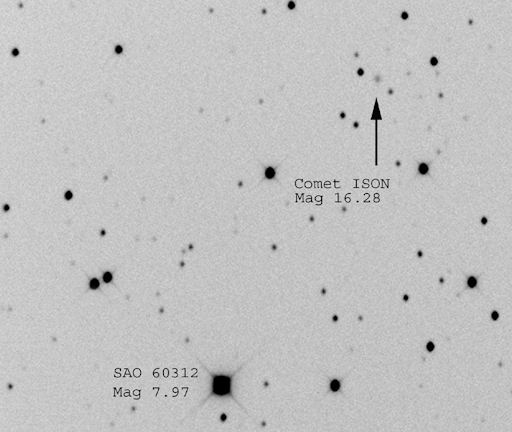
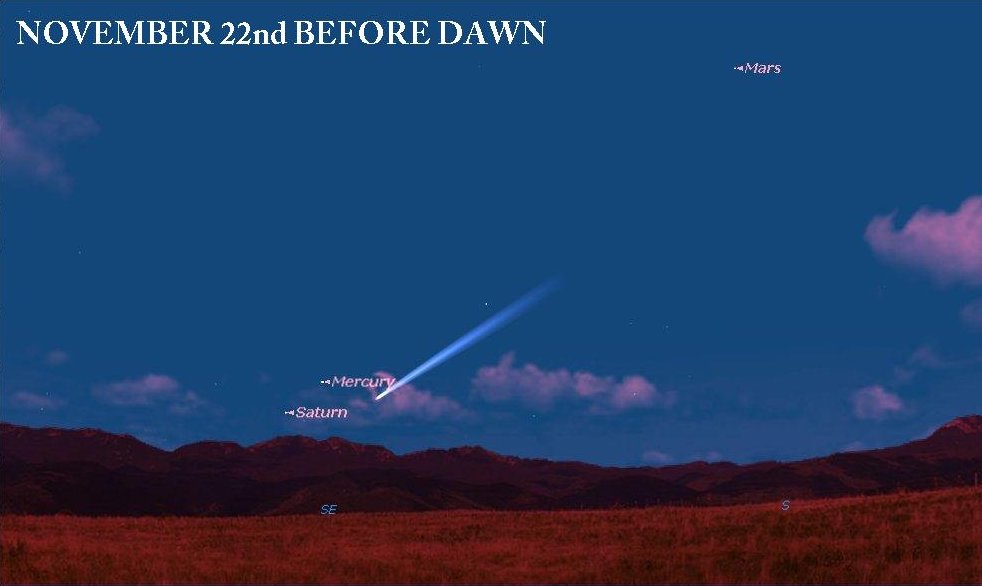




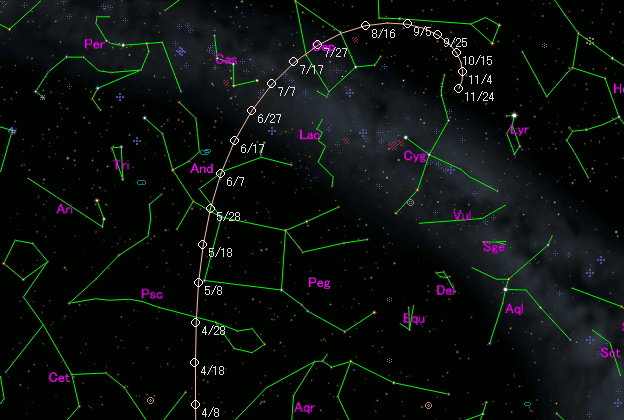


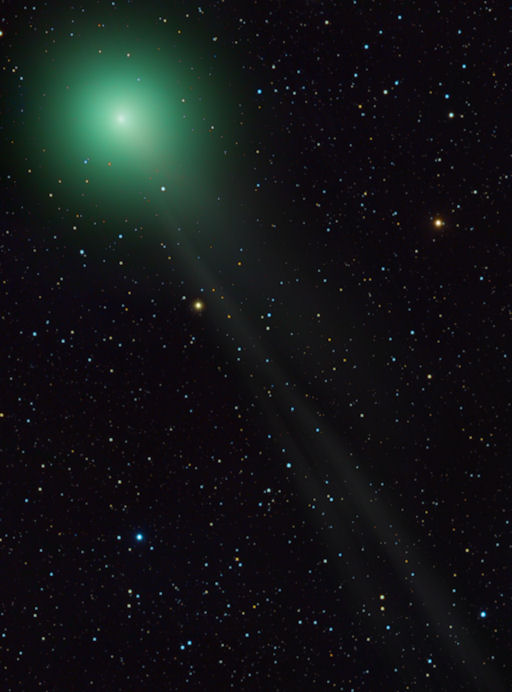
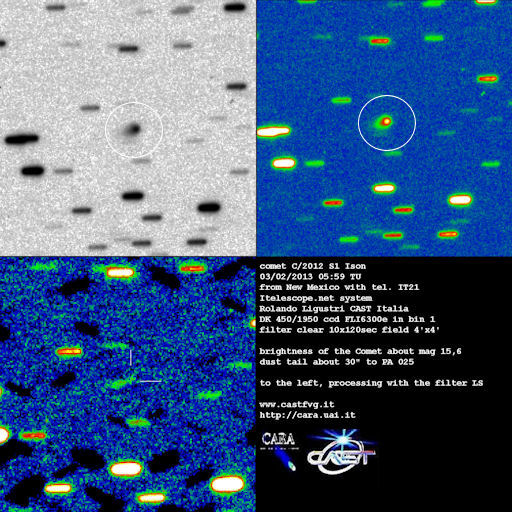
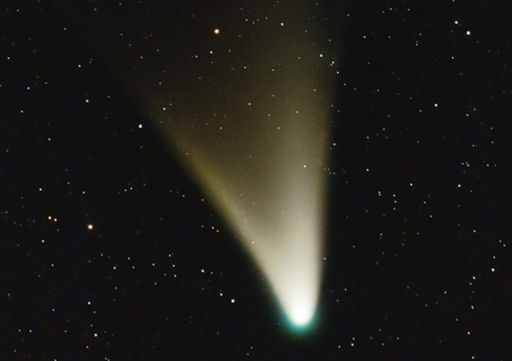

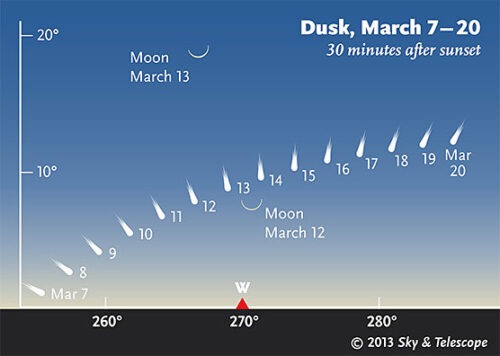


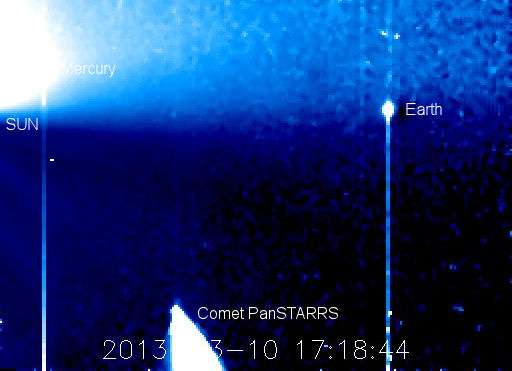

 Op
Op 

